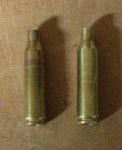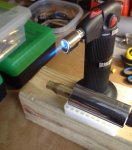Sometimes its hard for me to keep track of how many firings some of my brass has. I know most try to anneal every 4 or 5 firings. But can one anneal to often, such as some cases may have four firings but some also have two, in case some got mixed in together?
I'm talking about the same rifle. I have a 6 Lapua and I think most cases have four firings, but I think some may have only two, not sure. So would it hurt to do some if they only have two firings?
Thanks
I'm talking about the same rifle. I have a 6 Lapua and I think most cases have four firings, but I think some may have only two, not sure. So would it hurt to do some if they only have two firings?
Thanks


